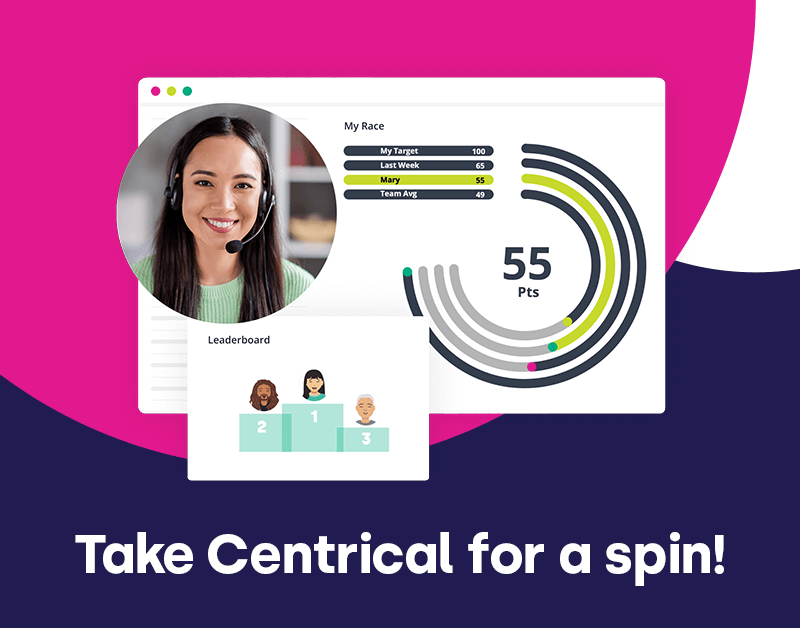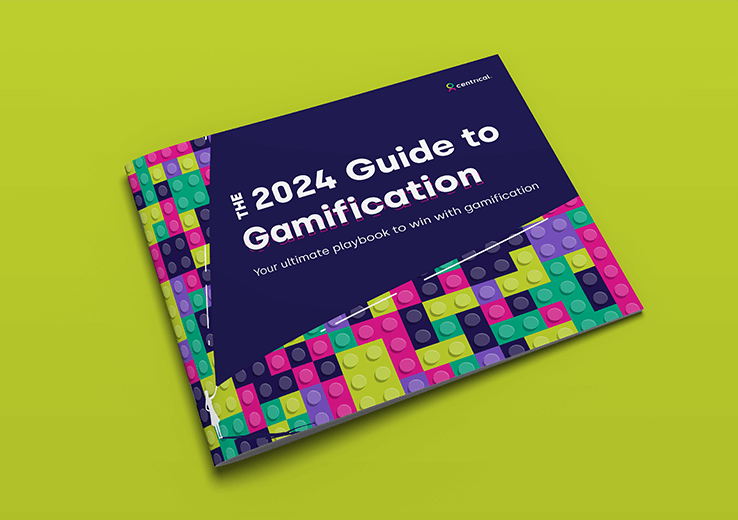New Insights for Enterprise Gamification … in 2015 & beyond!
Enterprise gamification is well into its 2.0 days. It is no longer (never was) about flying birds – it is evolving to encompass thinking about performance management methodologies; the use of gamification as an activity tracker ; a deeper understanding of employee motivation; and the use of game narratives. In fact, some would say that enterprise gamification is becoming the new corporate performance management.
In an interview with Monica Cornetti on her excellent podcast, I explored these questions.
Gamify for the Long-Term
Most people implementing gamification ask themselves how long the project will take. I’ve heard consultants mention that the typical gamification project they envision will last about a month. I believe that this is too short – their hope that this is enough time for employees to form habits is unfounded in my opinion. It is at most a boost – like a band aid. (I do wish to exclude gamification for employee training and onboarding from this discussion, since these naturally last for shorter periods of time). We believe that gamification projects need to run for the longer term, and we’ve had customer engagements that have lasted well over a year. Creating a game that causes behavioral change and infuses meaning requires some thought – it also needs to be updated over time… but in any case, it is worthwhile, because I believe that only then can the ROI of gamification be realized.
Competition vs Completion
Gamification 1.0, especially sales gamification, extolled the virtues of competition. Yet competition – and the scourge of points badges and leaderboards – is but one game element in an arsenal of many. More importantly, despite human being’s innate competitiveness, it is not the only thing that drives us humans. This is where other game mechanics, such as those that provide meaning (narratives) or “completion satisfaction” are better. But it’s not completion vs competition – like everything in life, it is a combination of the two.
All this brings in a revised way of thinking – gamification 2.0 For instance, implementing leaderboards that don’t use names, but rather group and personal benchmarks and targets. Why? Because leaderboards that pit individuals against each other make winning the only motivating factor — an end in itself as opposed to a means to an end, which was to increase team spirit, employee engagement, and other ways to impact bottom line results.
Activity Trackers & the Quantified Self
Another benefit of focusing on completion is “completion satisfaction”. In other words, just as you would use FitBit or NikeFuel to track your progress towards fitness or wellness goals, and feel immensely pleased with your progress, you would use on-the-job tracking to see whether you are on target, which leads to “completion satisfaction” — the great intrinsic reward of a job well done.
Narratives & Gamification
Using narratives in gamification also creates engagement and can better communicate the need to achieve conflicting KPIs, teaching employees about balance (between customer satisfaction and call times etc). Narratives (such as races, song contests, sports and more) are strong metaphors, therefore they can be easily combined with many fun game elements to achieve a more emotional reaction from users. Emotional, because narratives are the strongest driver of human behavior. Our fantasy sports league, TV-like contests, raffles, competitions or city themes encourage teams to cooperate and, by playing weekly games with leagues even, means there’s always another week to improve (rather than a fixed and deterministic leaderboard for an entire month or quarter). The sense of mastery mentioned above, also comes into play.
Clearly we don’t mean that people play a full game that is a narrative, like a full adventure, but rather that narratives help people make sense of the game and its symbolic meanings. They are also more fun:
- For instance, for employee on boarding or training the narrative can be city building. With every element or challenge that you master, you get a building.
- Many people like a car racing theme or fantasy sports leagues. Sports narratives are great, because the concept of a race is flexible: you can do very well one week and less so the next.
- Narratives let you combine several elements in gamification. For instance, you can have a pit stop in a racing narrative whereby instead of changing your tires you will have some on-the-job training. Pit stops are an opportunity for the weaker performers or rookies to get some training and return to the game — a less punishing form of gamification.
Using narratives to encourage complex behavior guarantees that your gamification efforts will have lasting effects.
Gamification in 2015 & Beyond
We believe that “gamification is the new corporate performance management.” Gamification communicates corporate goals and the behaviors that tie into them. Done well, it creates clarity and transparency, which is more engaging and creates a more trusting environment.
We believe that implementing these techniques contributes to a sense of inner worth and a better sense of engagement at work.
People often think of gamification in a simplistic way – get points, get on top of the leaderboard. However, it can meet many employee needs, such as awareness of what is going on, getting feedback, and even on-the-job training. So, for gamification to excel today and well into the future, it should be a means of communication, engender trust, be non-punishing with pit stops along the way, and should engage and reward the top 70 percent of employees, not just the top 1 percent.
Engage and motivate your frontline teams
Improve performance with an AI-powered digital coach
Deliver world class CX with dynamic, actionable quality evaluations
Boost performance with personalized, actionable goals
Nurture employee success with the power of AI
Listen and respond to your frontline, continuously
Drive productivity with performance-driven learning that sticks
Drive agent efficiency, deliver client results
Keep tech teams motivated and proficient on products and services while exceeding targets
Maintain compliance while building customer happiness and loyalty
Enlighten energy teams to boost engagement
Engage, develop, and retain your agents while driving better CX
Improve the employee experience for your reservations and service desk agents



 Madeleine Freind
Madeleine Freind
 Natalie Roth
Natalie Roth Linat Mart
Linat Mart












 Doron Neumann
Doron Neumann Gal Rimon
Gal Rimon Daphne Saragosti
Daphne Saragosti Ella Davidson
Ella Davidson Ariel Herman
Ariel Herman Ronen Botzer
Ronen Botzer